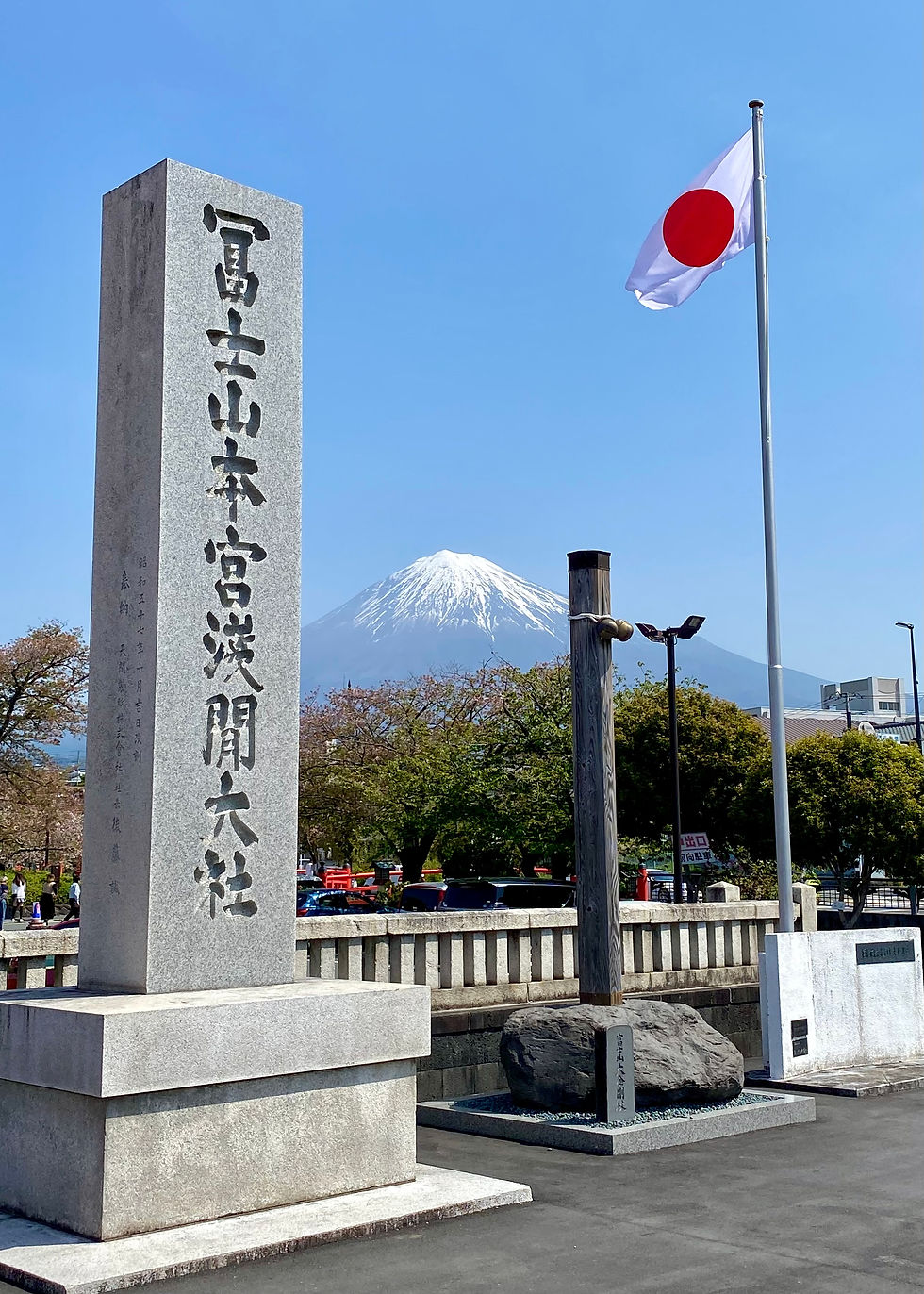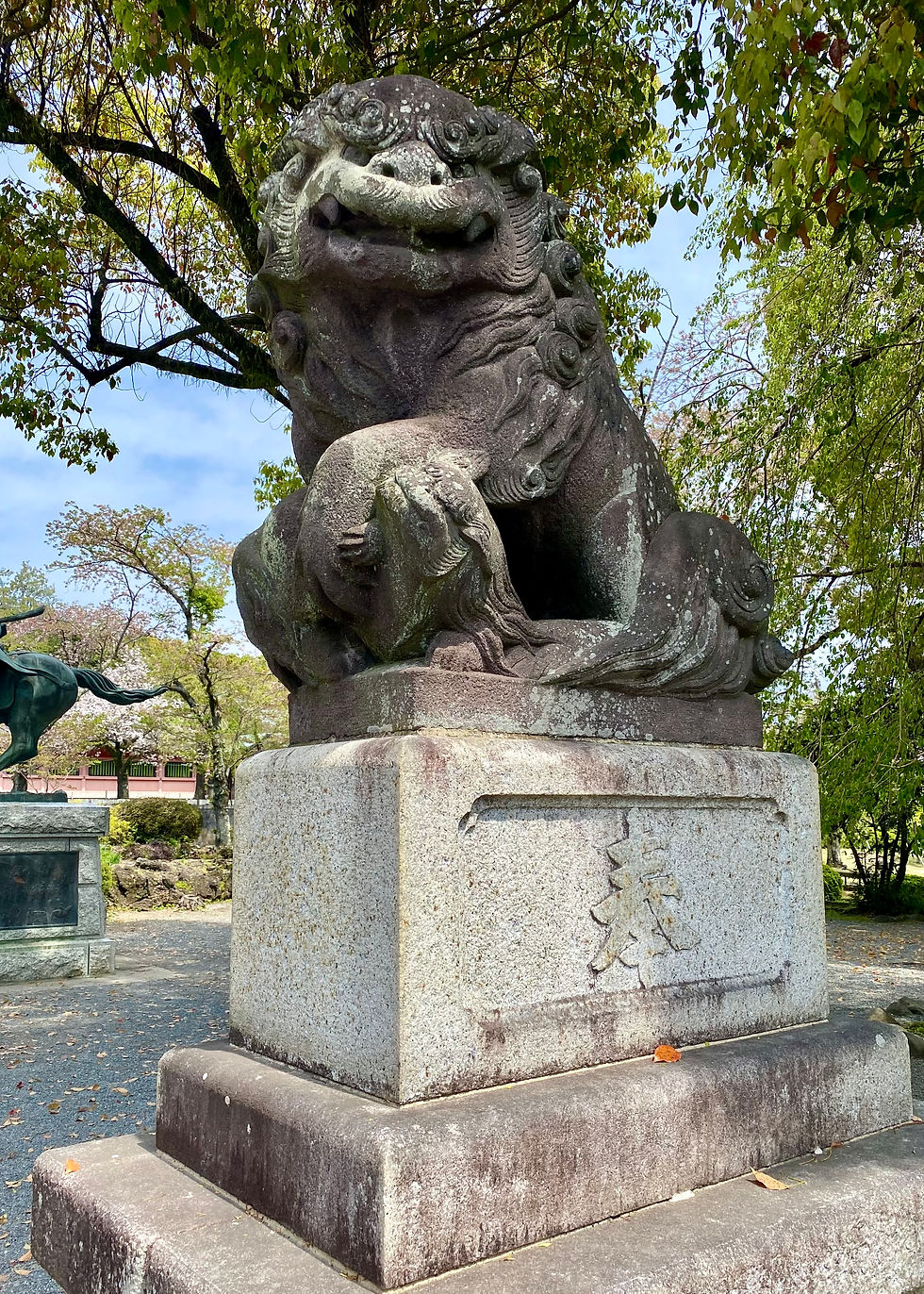April 15, 2024–Mount Fuji, Japan
- mlchad147
- Apr 15, 2024
- 5 min read

Today was a bit of an emotional day for me, and one that I had circled on the calendar all the way back when we booked this cruise more than a year ago. Almost 53 years ago, in August of 1971, I had the incredible experience of camping near the foot of Mt. Fuji for eleven days at a World Boy Scout Jamboree. Each morning I would get up and look at that impossibly beautiful volcano and shake my head in wonderment at my good fortune. When we packed up and left I never dreamed that I’d be back, and the following decades bore that out. Life has a way of keeping you busy.
And then this cruise came along, with Fuji on the itinerary. Even better, the tour we booked would take us to an observation deck quite near the old Jamboree site. Weather permitting, I would be able to see the mountain just as I did all those years ago. If it seems like I’m being overly sentimental, I would offer two arguments in my defense.
First, anyone who attended that Jamboree would tell you that those eleven days were especially memorable, and included a killer typhoon that leveled everything and forced our evacuation to a school gymnasium for two days. I’ll never forget the horizontal rain and several inches of water running through my tent before we left. We came back when the typhoon passed, rebuilt, as Scouts will, and finished the Jamboree with memories to last a lifetime.
Second, there is no way to describe the impact that seeing Fuji up close has on you. I’ve never seen a photo that does it justice. The mountain is enormous, and its power, majesty and beauty are mesmerizing. You just have to see it yourself to understand.
We docked this morning in Shimizu, the nearest port to Fuji, and were blessed with sunny, cloudless skies and just a mild haze. We would be able to see the mountain. In fact, the conditions were so good that Fuji was clearly visible from the ship. Talk about good fortune. Our tour bus set off at 9:00 am for the fifty minute drive to Fujinomiya, where the Mt. Fuji World Heritage Center is located. I should mention the drive, because it was interesting in its own right. Most of the trip was on the Shin-Tōmei Expressway, a superhighway that connects Tokyo and Nagoya. The section we traveled passed through high, rugged, steep sided mountains, and the highway consists of a seemingly unending series of tunnels and really high bridges. It’s a marvel of engineering, and I can’t imagine what it must have cost to build it.
Whatever the cost, it certainly worked to our benefit, and the trip to Fujinomiya was quick and uneventful. The Mt. Fuji World Heritage Center is a modern, three story building that tells the mountain’s story, geologically, culturally, and historically. There are exhibits, short films, and most importantly, a curving ramp all the way up to the roof, where there’s a large, open air observation deck providing spectacular views of Fuji. As I mentioned above, the Center is quite near the old Jamboree site, so my view was almost identical to the one I had then. In one way, though, the view was even better today. In 1971 I was here in August, when the mountain had shed its winter coating of snow. However, today we had the mid-April benefit of seeing the top of the mountain covered in snow, and it was beautiful.
I spent a lot of time on the deck just staring at the mountain, and truth be told many people will tell you it’s hard to turn away from. The view just keeps drawing you back. Eventually though it was time to leave, because we were going to make the short walk from the World Heritage Center to Fujisan Hongū Sengen Taisha, one of the most important Shinto shrines in all of Japan. In fact, it serves as the head shrine of 1300 Sengen Shinto shrines across the country. You know you’re in an important shrine right away when you see the chrysanthemum seal on the stone lantern at the entrance, because that is the seal of Japan’s imperial family. And consider this—the entire top of Mt. Fuji, from the eighth stage to the summit, is considered part of the shrine.
The shrine’s origins actually predate historical records, and it was built in its current location in order to appease the god of the mountain during a time when Fuji was very active. Its long history is intertwined with Japan’s tumultuous political history, far beyond the scope of this blog, so I’ll cut to the chase and note that Fujisan Hongū Sengen Taisha is officially designated a First Rank Imperial Shrine, and many of the 400,000 annual climbers of Mt. Fuji stop here first to pray for a safe hike.
The shrine itself is quite beautiful, and has the benefit of a stream and pond that are fed directly from Fuji runoff. It is said that it takes eighty years for water to reach the shrine from the summit of Fuji, which means the water I saw today had already been on its way down the mountain for 23 years when I was here in 1971. That’s kind of mind boggling.
At last it was time to board the bus for the return trip to Shimizu and our ship, and once again I marveled at the superhighway that alternatively spans and bores through some really rugged mountains. Back on the ship we found a window table in the buffet that offered a clear view of Mt. Fuji as we ate a late lunch. As Michele and I often say to each other, best day ever.
As I write this we’re on our way to Osaka, our last of six stops in Japan. We have really enjoyed our time here and will leave with fond memories. Japan is clean, safe, and modern, and the people are wonderful. If you have ever wanted to visit East Asia, Japan would be at the top of my list of recommended destinations.
That’s all for now. I’ll be back with a report on Osaka, so stay tuned.

53 years ago, when our World Jamboree troop camped nearby. Can you pick me out?

The snow made the view even better than the one I had 53 years ago.

Shot from the parking lot of the Mt. Fuji World Heritage Center.

Another shot from the parking lot.

Cherry blossom seas too. How lucky can you get?

From the rooftop observation deck at the Mt. Fuji World Heritage Center. I just couldn’t break away.

Shot from the parking lot. That’s the World Heritage Center on the right, with its reflection in the shallow pool in front of it. Very cool architecture. On the left is an outer gate to Fujisan Hongū Sengen Taisha, the important Shinto shrine just a few blocks away.

Inner gate to the shrine. Can you believe this view? Cherry blossoms, Fuji, the gate, and a bridge over the water. I love this photo.

The chrysanthemum image on this stone lantern tells you that this is an important imperial shrine.

One of the guardians at the entrance. Shinto shrines always have guardians.

Statue of the founder of the first shogunate in Japan, Minamoto no Yoritomo.

Purification is important in the Shinto religion. Worshipers pour water from Fuji runoff on their hands before approaching the main building to pray.

Prayer papers hung on a rack.

Worshippers toss coins into that wooden box, then bow, pray, clap their hands twice, and bow again. Michele decided to give it a try.

You often see this at Shinto shrines. Those jagged strips of paper represent lightning, and a prayer for rain to support the rice paddies.

Side view of the main building. It was beautiful and very elegant.

This water took eighty years to reach here from the peak of Fuji. It was already 27 years into its journey when I was here in 1971. I had to reach down and touch it.


